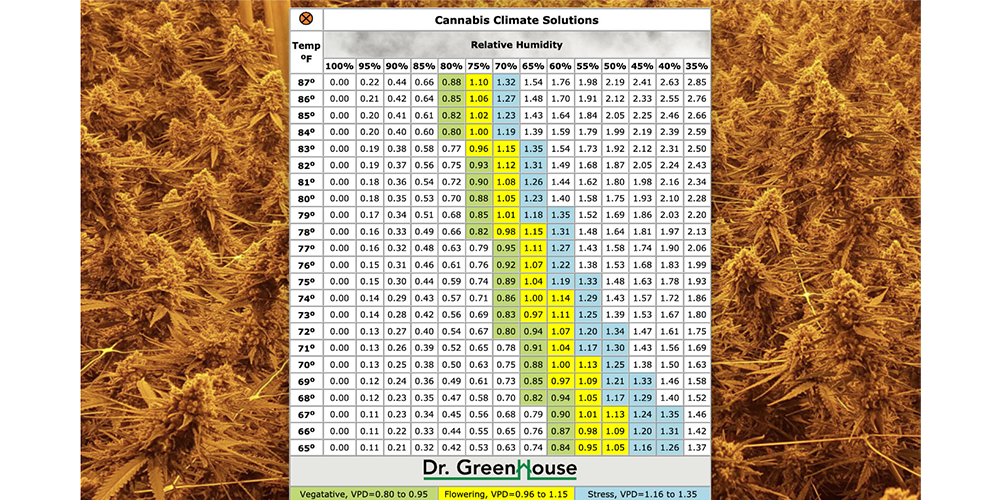Vapor Pressure Deficit
VPD, also known as vapor pressure deficit, is a specialized term in horticulture,
Simply put, it means "numerical values related to plant comfort, describing the sensation of the plant"
To understand VPD, we must first master transpiration. transpiration is a biological process in which water flows from roots to leaf pores, where it evaporates into the air in the form of water vapor. Under hot and dry conditions, plants transpiration more, just like humans sweat at high temperatures, leading to an increase in water consumption and watering needs.
VPD is directly related to plant transpiration rate, so by controlling VPD, growers can control the speed of water and nutrient transmission in plants. Increasing VPD leads to increased water and nutrient absorption through plant roots, which promotes plant growth at appropriate stages of life.
Using an appropriate VPD, an appropriate amount of water vapor will diffuse from the humid interior to the atmosphere through pores.
If too dry air causes plants to evaporate too much water, excess nutrients will accumulate in the leaves. This will kill leaf cells and cause the leaves to exhibit so-called nutrient "burning". To prevent this, the plant will try to limit transpiration by closing the stomata. Of course, this will prevent CO2 from flowing into plants, thereby reducing growth. Plants also protect themselves by rolling up their leaves to reduce the area where the leaves are exposed to light. Depending on the severity of the situation, this self-defense strategy may only be effective for a short period of time.
When excessively humid air limits the rate of water evaporation from leaves, plants cannot bring enough nutrients from their roots. This will greatly reduce plant growth and weaken plants, making them more susceptible to fungal attacks. Sometimes, accumulated water from the roots is forcibly expelled, appearing around the leaf edges or where the leaves adhere to the stem.
According to research, there is a relatively optimal range of VPD values for different periods of marijuana. According to the corresponding tables, the corresponding humidity and temperature under each VPD value can be known, which can better clarify the working conditions of our greenhouse dehumidifier and make it more advantageous to match the greenhouse dehumidification amount.

(The data from Dr. GreenHouse)
Cannabis Climate Solutions
|
Growth Process |
Humidity and Temperature |
|
Vegetative stage: |
80%RH: 28℃-30.5℃ |
|
75%RH:25.5-27.9℃ |
|
|
70%RH:22.2-25℃ |
|
|
65%RH:20-25℃ |
|
|
60%RH:18.3-20℃ |
|
|
Flowering stage: |
75%RH:28.3-30.5℃ |
|
70%RH:25.5-28.3℃ |
|
|
65%RH:22.7-25.5℃ |
|
|
60%RH:20.5-23.3℃ |
|
|
Stress stage: |
70%RH:28.3℃-30.5℃ |
|
65%RH:26.1-28.3℃ |
|
|
60%RH:23.8-26.1℃ |
|
|
55%RH:21.6-23.8℃ |
|
|
50%RH:20-22.2℃ |
|
|
45%RH:18.3-20.5℃ |
|
|
40%RH:18.3-19.4℃ |
Preair Grow Room Dehumidifiers
Several kinds of dehumidifiers made by Preair can be applied in greenhouses. If your grow room is relatively small and without a high roof, you can consider to choose the PR80 dehumidifier. If your grow room has a certain scale, you would better to choose the commercial ceiling mounted dehumidifier for greenhouse dehumidification, which is more efficient and cost-saving.
Post time: May-17-2023
 +86-13376814803
+86-13376814803  robert@hzhongtai.com
robert@hzhongtai.com 













